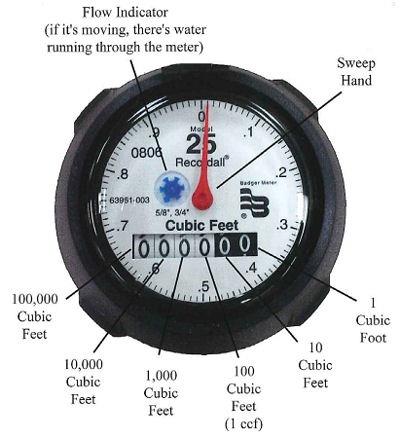STEP 1 Locate your meter box, generally found towards the front of a property, near the street. The box is typically in a direct line with the main outside faucet. It is housed in a concrete box usually marked "water". Remove the lid by using a tool such as a large screwdriver. Insert the tool into one of the holes and pry the lid off.
STEP 2 Once you open the meter box lid, lift the protective cap on the meter. On the face of the meter, there is a large dial and a display of numbers. Read the number display from left to right. Be sure to include the stationary zero. This is your meter reading. Meters measure water in cubic feet. Compare that reading to what your bill states as your current or present reading. Don't forget to put the cover back over the meter dial and replace the lid.
STEP 3 Keep in mind that you might be checking your meter on a date different from the one used for billing. This could result in a difference in the amount you find, compared with the amount on which your bill is based. However, if your reading is considerably higher than what is on your bill, check for a leak or try to determine the source of large water use. If your reading is significantly lower than the reading on your bill, please contact us and let us assist you in determining the problem.
Looking for a leak? Make sure all water consuming items in your home are turned off. Look at the little flow indicator on the dial. If the pointer is moving, then your house is actually using water when you think it shouldn't be. It could be a leak in your irrigation system, or in one of your toilets.
If you want to protect against leaks, you can consider purchasing a device that will monitor water flow and alert you if a leak is detected, or even shut off the valve at the water meter. Click on the link below to see list of some available products. Please note that this list is provided without endorsement or recommendation, and you should consult with a plumber for advice specific to your situation.
 Skip to main content
Skip to main content
 Meter Reading
Meter Reading
